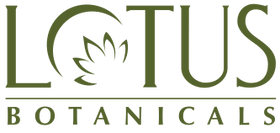
Using a detoxifying clay mask for blackheads is a practical way to address pore congestion and improve skin clarity. Clay masks containing bentonite and kaolin help absorb excess oil and remove impurities, reducing blackheads and leaving skin smoother. These mineral-rich formulas support a balanced complexion without excessive dryness.
Choosing the right clay mask starts with understanding your skin type. Bentonite clay is ideal for oily or acne-prone skin due to its strong oil-absorbing properties, while kaolin is gentler for sensitive or combination skin. If you experience irritation, look for masks with soothing botanicals like chamomile or calendula. For acne-prone skin, green tea and tea tree oil can offer added benefits. Always review ingredient lists for potential allergens and avoid harsh chemicals such as parabens or sulfates.
Clay masks come in various forms—mud masks, pure clay, and multi-ingredient blends. Mud masks typically offer additional hydration, while pure clay formulas focus on deep cleansing. Multi-ingredient masks combine clays with botanicals for targeted benefits. If you're new to clay masks, consider starting with a multi-ingredient formula for balanced results or a pure bentonite mask for intensive oil control.
| Brand | Main Ingredients | Size | Price Range | Best For |
|---|---|---|---|---|
| Kiehl's Rare Earth | Bentonite, Amazonian Clay | 125g | ₹2,500–₹2,800 | Oily & Normal |
| Bubble Come Clean | Kaolin, Bentonite | 100g | ₹1,600–₹1,800 | Combination |
| Lotus Botanicals | Bentonite, Kaolin, Green Tea, CICA | 100g | ₹499–₹699 | All Skin Types (Sensitive & Acne-Prone included) |
Kiehl's, Bubble, and Lotus Botanicals each offer clay masks with unique ingredient blends and price points. Compare size, suitability, and formulation to find what matches your skin needs and budget. Lotus Botanicals provides an affordable option with a gentle, multi-ingredient formula suitable for a wide range of skin types.
"After two weeks, my skin texture improved and blackheads were less noticeable." – Priya S.
"I have sensitive skin and the mask didn't cause any irritation. My face feels clean and matte." – Rahul M.
For ongoing results, pair your clay mask with targeted pore-refining products like a CICA Pore Minimizing Face Toner or Face Gel. This approach helps maintain clear pores and supports overall skin health.
At Lotus Botanicals, we offer clean, science-driven skincare including clay masks, pore minimizers, and clarifying cleansers for every skin type. To explore our full selection and access exclusive offers, visit Lotus Botanicals today.
1. How does a detoxifying clay mask for blackheads work?
A detoxifying clay mask for blackheads draws out oil and impurities from pores using mineral clays, helping reduce blackheads and improve skin clarity.
2. Can clay masks permanently remove blackheads?
Clay masks help minimize and prevent blackheads with regular use, but do not permanently remove them. Ongoing skincare is needed for lasting results.
3. How often should you use a detoxifying clay mask for blackheads?
Most people benefit from using a detoxifying clay mask for blackheads 2–3 times per week, depending on skin type and sensitivity.
4. Which ingredients make a clay mask effective against blackheads?
Effective clay masks for blackheads often contain bentonite or kaolin clay, green tea, and tea tree oil to absorb oil and soothe skin.
5. Are clay masks suitable for sensitive or acne-prone skin?
Many clay masks are gentle enough for sensitive or acne-prone skin, especially those with kaolin clay and calming botanicals. Always patch test before use.
6. Do clay masks help control oily skin and large pores?
Clay masks are well-suited for oily skin and enlarged pores. They absorb excess sebum and help refine skin texture.
7. Can you use clay masks with other skincare treatments?
Clay masks can be used alongside other skincare treatments, but space out applications to avoid dryness or irritation. Follow product instructions for best results.
8. What is the best way to apply a clay mask for blackheads?
Apply a thin layer of clay mask to clean skin, let it dry for 10–15 minutes, then rinse with lukewarm water and follow with a moisturizer.
9. What pore care products does Lotus Botanicals offer?
Lotus Botanicals offers pore care solutions such as clay masks, CICA Pore Minimizing Face Gel, and Pore Minimizing Face Toner, available online.
10. Are Lotus Botanicals clay masks vegan and cruelty-free?
Yes, Lotus Botanicals clay masks are vegan, cruelty-free, and formulated without parabens, sulfates, or silicones.
Phone : 1800 1200 36231
Email : care@lotusbotanicals.com
WhatsApp
: +917290031713
Free shipping on order above 599
Your payment information is processed securely.
Please beware of fraudulent messages and phone calls on behalf of Lotus Botanicals. We NEVER ask for bank details, OTPs, advance cash payments or engage in lotteries.